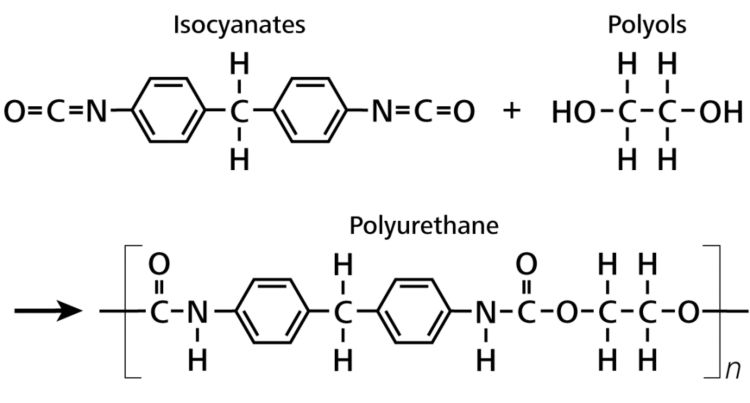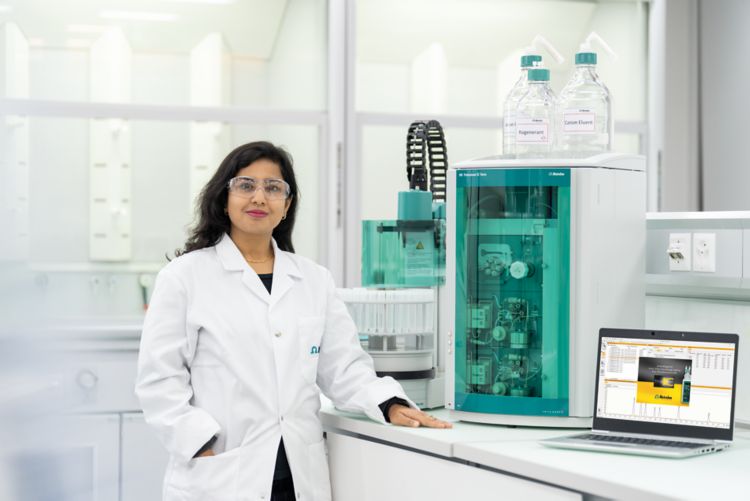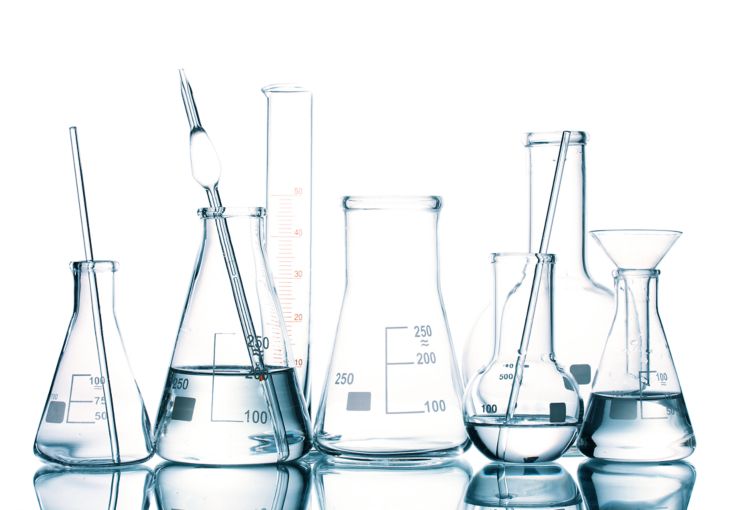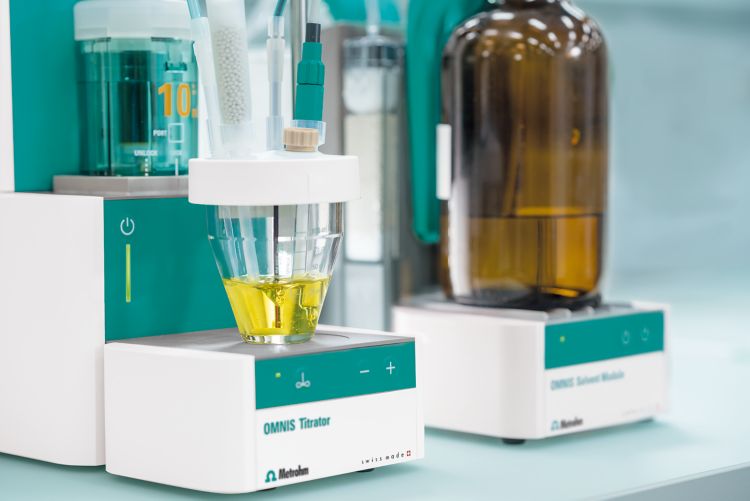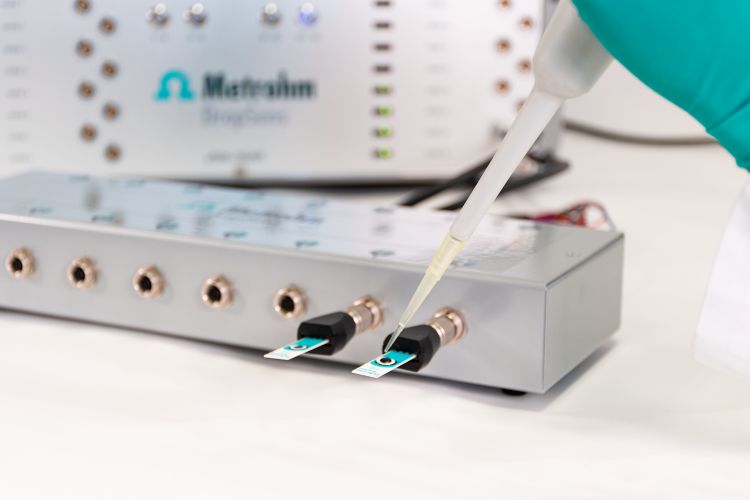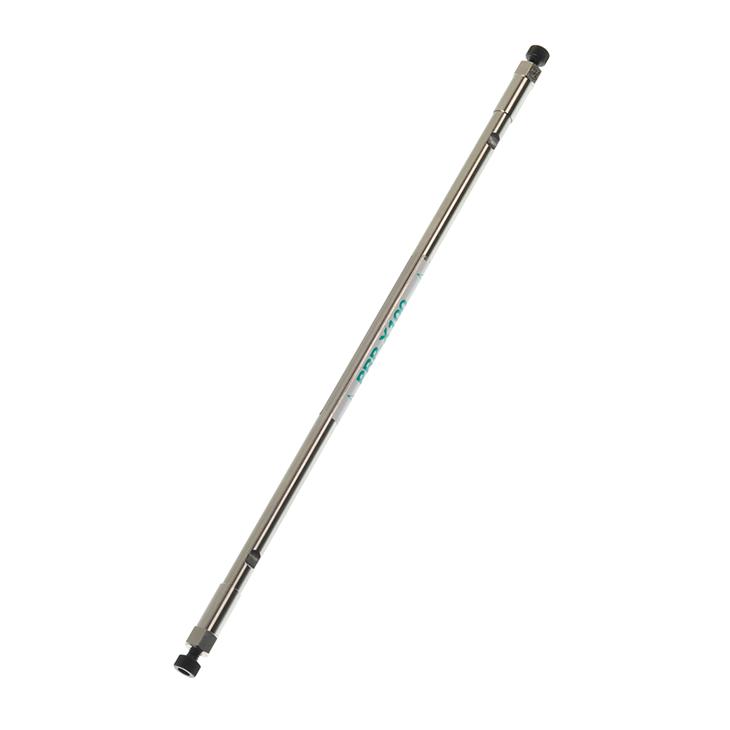Search
Market-leading solutions
Product families (73)Product configurations for any application
Product models (708)Tried-and-tested applications
Applications (2279)Trainings & webinars by experts
Events (7)Electrodes
Electrodes (509)Columns
Columns (155)Accessories
Accessories (2212)Software
Software (270)Manuals & brochures
Documents (2596)Inspiring industry insights
Insights (176)News
News (54)Other content
Items (96)Unmatched support & service
Support & service (79)On-demand webinars
Webinars (65)2035 Process Analyzers
Process analyzers available in potentiometric, photometric, and thermometric versions with optional additional pH and conductivity measurement.
Columns for IC
Ion chromatography columns from Metrohm include separation columns, guard columns, precolumns, trap columns, accessories for columns, and more.
202X series
Single-method process analyzers for chemical, water, and wastewater monitoring with titration, pH, ISE, or photometry methods.
Electrochemiluminescence
Versatility, simplicity, and improved synchronization and sensitivity for the ECL analytical technique.
ProTrode pH sensors
Enhance your process insights with inline pH measurements
PTRam Analyzer
Inline self-calibrating process development Raman.
Rancimat and Thermomat
Accelerated aging testing (oxidation stability index and stability time) for natural oils and fats, fat-containing folds and cosmetics, biodiesel, and chlorine-containing polymers, such as PVC.
Eco Dosimat
The economic standalone liquid handling (LQH) device to support precise dosing for preparation of solutions and standards, chemical reaction control, and manual titration.
Dosimat plus
Liquid handling system for use as independent, manually controlled instrument or as automatic dosing device for Titrino plus titrators.
846 Dosing Interface
Liquid handling device that controls up to four dosing drives, offering flexibility for different liquid handling tasks in the lab. The device can be used as a standalone instrument or as an add-on for existing Metrohm systems to increase the degree of automation.
2.1001.0110
OMNIS Basic Titrator without stirrerInnovative, modular potentiometric OMNIS Titrator for endpoint titration. Thanks to 3S Liquid Adapter technology, handling chemicals is safer than ever before. The titrator can be freely configured with measuring modules and cylinder units and can have a stirrer added as needed. If required, the range of functions of the OMNIS Basic Titrator can be extended with a corresponding software function license. Control via PC or local network; Can be supplemented with magnetic stirrer and/or rod stirrer; Various cylinder sizes available: 5, 10, 20 or 50 mL; Connection option for up to four additional titration or dosing modules for additional applications or auxiliary solutions; Liquid Adapter with 3S technology: Safe handling of chemicals, automatic transfer of the original reagent data from the manufacturerMeasuring modes and software options:; Endpoint titration: "Basic" function license; Endpoint and equivalence point titration (monotonic/dynamic): "Advanced" function license; Endpoint and equivalence point titration (monotonic/dynamic) with parallel titration: "Professional" function license;
2.1008.2010
Eco Titrator SaltThe compact Eco Titrator with integrated magnetic stirrer and touch-sensitive User Interface is ideal for routine analysis. It provides GLP-compliant results with minimum space requirements at all times (approx. DIN A4).The Eco Titrator Salt plus offers you the complete package for the analysis of chloride in a wide variety of samples. The package contains a titrator, a 10 mL cylinder unit and an Ag Titrode, a maintenance-free electrode for precipitation titration with silver nitrate.
2.1010.1010
OMNIS Sample Robot S Pick&PlaceOMNIS Sample Robot S with a "Peristaltic" (2-channel) pump module and a Pick&Place module in addition to extensive accessories for the direct transition to fully automatic titration. The system provides space in two sample racks for 32 sample beakers of 120 mL each. This modular system is supplied completely installed and can thus be put into operation in a very short time.The system can also be extended upon request to include two additional peristaltic pumps and another Pick&Place module, thus doubling the throughput. If additional workstations are required, then this Sample Robot is already able to be expanded to become an L-sized OMNIS Sample Robot, thus enabling samples from seven racks to be processed in parallel on up to four Pick&Place modules and quadrupling the sample throughput.
2.858.0020
858 Professional Sample Processor – PumpThe 858 Professional Sample Processor – Pump processes samples from 500 µL to 500 mL. The sample transfer takes place either with the installed bidirectional two-channel peristaltic pump or with an 800 Dosino.
2.921.1310
NIRS XDS MasterLab AnalyzerRapid, nondestructive analyses of tablets, capsules and other solid-state dosage forms.The NIRS XDS MasterLab Analyzer enables the rapid, nondestructive analyses of solid-state dosage forms such as tablets, capsules, film-coated tablets, gel tablets and gel capsules for manufacturers in the pharmaceuticals industry. Solids in vials can also be analyzed with the NIRS XDS MasterLab Analyzer. The analysis takes place in reflection or transmission mode. The sample input proceeds via a sample slide that can be moved in x and y direction and that is designed for trays with several tablets and/or vials. Analyses of individual samples are optimized with an iris. An optionally available coarse granular sample cell for coarse granular substances extends analysis to include practically all solid forms ranging from fine powders to coarse granular materials, e.g., pellets and flakes.
2.922.1000
NIRS DS2500 Polymer AnalyzerRobust near-infrared spectroscopy for quality control of polymers, not only in laboratories, but also in production environments.The NIRS DS2500 Polymer Analyzer is the tried and tested, flexible solution for quality control and routine analysis of PE, PP, PET, polyamide, and other polymers in solid form along the entire production chain. Resistant to dust, moisture, vibrations, and temperature fluctuations, the NIRS DS2500 Polymer Analyzer is not only suitable for laboratory use, but also use in harsh production environments.The NIRS DS2500 Polymer Analyzer covers the full spectral range from 400 to 2,500 nm and delivers accurate results in less than one minute. The NIRS DS2500 Polymer Analyzer is ready for immediate use through pre-calibrations for PE, PP, PET, and polyamide (PA 6) and, thanks to its simple operation, supports users in their day-to-day routine tasks.
2.945.0010
945 Professional Detector Vario – ConductivityIntelligent stand-alone detector equipped with a high-performance IC Conductivity Detector. For use with intelligent IC instruments or as independent conductivity detector.
A062029010C
2029 Process PhotometerThe 2029 Process Photometer performs sensitive photometric absorption measurements in the visible light range. Detection limits in the low ppb range make this an attractive instrument for a variety of applications.At the heart of the analyzer is a high performance compact photometer module ready for 24/7 online measurement. It comprises a thermostated cuvette with 3 cm light path and LED technology, ensuring stable, accurate measurements no matter the environment. The color development stabilization is automatically detected by making use of differential absorbance measurements. Photometric laboratory methods can be easily transferred to the 2029 Process Photometer, eliminating any bias in results for improved process validation.Several markets are a perfect fit for the 2029 Process Photometer such as chemical, environmental, semiconductor, petrochemical, food and beverage, potable water, and energy/power.Selected applications include:Phosphate; Silica; Chlorine; Nickel; Zinc; Copper; Chromium; Ammonia; Nitrate; Nitrite; Hardness; and more;
BWT-840000341
NanoRam Handheld Raman SpectrometerThe NanoRam is a state-of-the-art, handheld Raman instrument for nondestructive identification and verification of incoming raw materials such as APIs, excipients, and intermediates. Compact and flexible, the NanoRam can be used by non-technical users to rapidly identify samples in the warehouse, on the loading dock, or in the lab, minimizing quarantine areas and expediting materials through the manufacturing lifecycle. Utilizing Raman technology, nondestructive analysis can be performed through transparent containers, maintaining the volume and integrity of the sample.The NanoRam meets the general requirements of Raman spectroscopy methods, including all the requirements of the US Pharmacopeia General Chapter <858>, European Pharmacopeia 2.2.48, Japanese Pharmacopeia 2.26, as well as the People’s Republic of China Pharmacopeia Guidelines on Raman Spectroscopy. Handheld Raman spectrometers support companies in compliance with the PIC/S & GMP guidelines regarding 100% identity assurance for starting materials. The NanoRam is fully compliant with the US FDA 21 CFR Part 11 and Part 1040.10, and can play an integral role in cGMP-compliant facilities. Full training and support services are available, including IQ/OQ/PQ/DQ implementation services as well as method and/or new library development support.
BWT-840000880
i-Raman EX Portable Raman SpectrometerThe i-Raman® EX is part of our award-winning series of i-Raman portable Raman spectrometers with our patented CleanLaze® laser with 1,064 nm laser excitation. Using a high-sensitivity InGaAs array detector with TE deep cooling, high dynamic range, and a high throughput spectrograph design, this portable Raman spectrometer delivers a high signal-to-noise ratio without inducing autofluorescence, making it possible to measure a wide range of natural products, biological samples (such as cell cultures), and colored samples.The i-Raman EX provides a spectral coverage range from 100 cm-1 to 2,500 cm-1, enabling you to measure across the entire fingerprint region. The system’s small footprint, lightweight design, and low power consumption ensure research-grade Raman analysis capabilities at any location. The i-Raman EX comes equipped with a fiber probe and an XYZ-positioning-stage with probe holder. It can be used with a range of sampling accessories to facilitate measurements on a wide range of different samples. For expanded analysis capabilities, it can be used with our proprietary BWIQ® multivariate analysis software or BWID® identification software. With the i-Raman EX, you always have a high precision Raman solution for qualitative and quantitative analysis without fluorescence.
- 8.000.60058.000.6005Hyphenated techniques as modern detection systems in ion chromatography
The coupling of highly efficient ion chromatography (IC) to multi-dimensional detectors such as a mass spectrometer (MS) or an inductively coupled plasma mass spectrometer (ICP/MS) significantly increases sensitivity while simultaneously reducing possible matrix interference to the absolute minimum. By means of IC/MS several oxyhalides such as bromate and perchlorate can be detected in the sub-ppb range. Additionally, organic acids can be precisely quantified through mass-based determination even in the presence of high salt matrices. By means of IC-ICP/MS different valence states of the potentially hazardous chromium, arsenic and selenium in the form of inorganic and organic species can be sensitively and unambiguously identified in one single run.
- 8.000.60078.000.6007Determination of sulfate in denatured ethyl alcohol according to ASTM D7319
In this poster a convenient direct injection suppressed ion chromatographic method for determining chloride and sulfate in denatured ethanol samples according to ASTM D7319 is presented.
- 8.000.60098.000.6009Determination of lanthanides by ion chromatography using non-suppressed conductivity and UV/VIS detection
The simultaneous ion chromatographic determination of trace-levels of lanthanides (or lanthanoides) was achieved by using either direct non-suppressed conductivity detection or UV/VIS detection after post-column reaction (PCR) with arsenazo III at 655 nm. Conductivity detection under isocratic conditions resulted in an overall analysis time of approx. 70 minutes. In contrast, the determination of the lanthanides via gradient elution and subsequent spectrophotometric detection of the arsenazo III-lanthanide(III) complexes was performed within 22 minutes. Besides the outstanding analysis time, UV/VIS detection excelled by its enhanced selectivity and sensitivity and did not suffer from interferences by ubiquitous non-lanthanide impurities such as iron(III) or other transition metals. For both conductivity and spectrophotometric detection, the inclusion of sample preconcentration steps lowered the limit of detection (LOD) to the sub-ppb range.
- 8.000.60108.000.6010Inline sample preparation – An effective tool for ion analysis in pharmaceutical products
By means of azide analysis in Irbesartan a simple, fast, precise and accurate ion chromatographic method for the determination of traces of inorganic contaminants in pharmaceuticals is described. Traces of toxic azides in pharmaceutical products can accurately be determined in the sub-ppb range after Metrohm Inline Matrix Elimination using isocratic ion chromatography (IC) with suppressed conductivity detection. While the azide anions are retained on the preconcentration column, the interfering pharmaceutical matrix is washed away by a transfer solution, ideally consisting of 70% methanol and 30% ultrapure water. The analytical setup provides a well-resolved azide peak and thus alleviates the common drawback of excipient interferences, especially from the nitrate anion. Calibration with azide standards is linear over the range of 5…80 ppb, providing a coefficient of determination of 0.9995. The limit of detection (LOD) and the limit of quantification (LOQ) of azide in Irbesartan are 5 and 30 µg/L respectively; the relative standard deviations (RSD) for the peak area, peak height and retention time being smaller than 3.9%. Robustness testing involved variation of column oven temperature and composition of the transfer solution and, in terms of peak area, provided RSDs smaller than 2.8% and 3.1% respectively.
- 8.000.60118.000.6011Ion chromatographic determination of anions, cations and organic acids in biofuels
Quality and process control of biofuels require straightforward, fast and accurate analysis methods. Ion chromatography (IC) is at the leading edge of this effort. Traces of anions in a gasoline/ethanol blend can accurately be determined in the sub-ppb range after Metrohm Inline Matrix Elimination using anion chromatography with conductivity detection after sequential suppression. While the analyte anions are retained on the preconcentration column, the interfering organic gasoline/bioethanol matrix is washed away.Detrimental alkali metals and water-extractable alkaline earth metals in biodiesel are determined in the sub-ppm range using cation chromatography with direct conductivity detection applying automated extraction with nitric acid and subsequent Metrohm Inline Dialysis. Unlike high-molecular substances, ions in the high-ionic strength matrix diffuse through a membrane into the low-ionic water acceptor solution. In biogas reactor samples, low-molecular-weight organic acids stem from the biodegradation of organic matter. Their profile allows important conclusions concerning conversion in the anaerobic digestion reaction. Volatile fatty acids and lactate can be accurately determined by using ion-exclusion chromatography with suppressed conductivity detection after inline dialysis or filtration.
- 8.000.60128.000.6012Automated logical dilution for ion chromatographic determinations
The combination of 850 Professional IC, 858 Professional Sample Processor, Dosino and MagIC NetTM software offers a variety of sophisticated ion chromatographic sample preparation techniques. One of these is the automated inline dilution of samples.After the first sample injection, MagIC NetTM verifies if the area of the sample peak lies within the calibration range. If the measured peak area is outside these limits, the software calculates the appropriate dilution factor, dilutes and automatically re-injects the sample. For all investigated ions (Li+, Na+, K+, Ca2+, Mg2+, F-, Cl- , NO2-, Br-, NO3-, SO42- ), automated logical dilution yielded coefficients of determination (R2) better than 0.9999. Direct-injection recoveries for cations and anions were within 98.6…99.5% and 93.4…100.4% respectively. In contrast, after logical dilution, recoveries for cations and anions were within 100.1…102.9% and 98.2…102.6% respectively. The relative standard deviations for all determinations involving diluted sample solutions were smaller than 0.91%.
- 8.000.60138.000.6013Analysis of produced water contaminants by ion chromatography
The analytical challenge treated by the present work consists in detecting sub-ppm quantities of bromide, sulfate, aliphatic monocarboxylic acids and several alkaline earth metals in the presence of very high concentrations of sodium and chloride. Bromide, sulfate, acetate and butyrate can be reliably determined by suppressed conductivity detection. Due to matrix effects, propionate can only be detected qualitatively. This drawback can be overcome by coupling the ion chromatograph (IC) to a mass spectrometric (MS) detector. This results in reduced matrix interferences and significantly enhanced sensitivities. The cations magnesium, barium and strontium are determined by non-suppressed conductivity detection.
- 8.000.60148.000.6014Determination of anions and cations in aerosols by ion chromatography
The study of adverse effects of air pollution requires semi-continuous, rapid and accurate measurements of inorganic species in aerosols and their gas phase components in ambient air. The most promising instruments, often referred to as steam collecting devices, are the Particle-Into-Liquid-Sampler (PILS) coupled to wet-chemical analyzers such as a cation and/or anion chromatograph (IC) and the Monitoring instrument for AeRosols and GAses (MARGA) with two integrated ICs. Both instruments comprise gas denuders, a condensation particle growth sampler as well as pump and control devices. While PILS uses two consecutive fixed denuders and a downstream growth chamber, the MARGA system is composed of a Wet Rotating Denuder (WRD) and a Steam-Jet Aerosol Collector (SJAC). Although the aerosol samplers of PILS and MARGA use different assemblies, both apply the technique of growing aerosol particles into droplets in a supersaturated water vapor environment. Previously mixed with carrier water, the collected droplets are continuously fed into sample loops or preconcentration columns for on-line IC analysis. While PILS has been designed to sample aerosols only, MARGA additionally determines water-soluble gases. Compared to the classical denuders, which remove gases from the air sample upstream of the growth chamber, MARGA collects the gaseous species in a WRD for on-line analysis. In contrast to the gases, aerosols have low diffusion speeds and thus neither dissolve in the PILS denuders nor in the WRD. Proper selection of the ion chromatographic conditions of PILS-IC allows a precise determination, within 4 to 5 minutes, of seven major inorganic species (Na+, K+, Ca2+, Mg2+, Cl-, NO3- and SO4 2-) in fine aerosol particles. With longer analysis times (10-15 minutes) even airborne low-molecular-weight organic acids, such as acetate, formate and oxalate can be analyzed. MARGA additionally facilitates the simultaneous determination of HCl, HNO3, HNO2, SO2 and NH3.PILS and MARGA provide semi-continuous, long-term stand-alone measurements (1 week) and can measure particulate pollutants in the ng/m3 range.
- 8.000.60158.000.6015Effect of eluent composition and column temperature on IC column retention times
This work was carried out with a Metrosep C 2 - 150 separation column, the following eluent parameters being investigated: nitric, tartaric, citric and oxalic acid concentration and concentration of the complexing anion of dipicolinic acid (DPA). The aim was to determine the effect of these parameters plus that of the column temperature on the retention times of alkali metals, alkaline earth metals, ammonium and amines using ion exchange chromatography with non-suppressed conductivity detection. Due to similar affinities for the ion exchange column, transition metals are difficult to separate with the classical nitric, tartaric, citric and oxalic acid eluents. Partial complexation with the dipicolinate ligand significantly shortens the retention times and improves the separation efficiency. However, too strong complexation results in a rapid passage through the column and thus in a complete loss of separation. Apart from a change in the elution order of magnesium and calcium at high DPA concentrations, other non-amine cations are only slightly affected by the eluent composition. Irrespective of the tartaric acid and nitric acid concentration in the eluent, an increase in column temperature shortens the retention times and slightly improves the peak symmetries of organic amine cations, particularly in the case of the trimethylamine cation. In contrast, an increase in column temperature in the presence of DPA concentrations exceeding 0.02 mmol/L increases the retention time of the transition metals. Depending on the separation problem, variation of the pH value, the use of a complexing agent and/or an increase in column temperature are powerful tools for broadening the scope of cation chromatography.
- 8.000.60168.000.6016Advantages of multidimensional ion chromatography for trace analysis
The analytical challenge treated in the present work consists in detecting trace concentrations (ppb) of bromide in the presence of a strong chloride matrix. This problem was overcome by separating the bromide ions from the main fraction of the early eluting chloride matrix (several g/L) by applying two sequential chromatographic separations on the same column. After the first separation, the main fraction of the interfering chloride matrix is flushed to waste, while the later eluting anions are diverted to an anion-retaining preconcentration column. After elution in counter flow, the bromide ions are efficiently separated from the marginal chloride residues. The four-point calibration curves for bromide and sulfate are linear in the range of 10…100 µg/L and 200…800 µg/L and yield correlation coefficients of 0.99988 and 0.99953 respectively. For the method shown here, a second injection valve and a preconcentration column are the only additional devices needed to master this demanding separation problem.
Defense and Security: Safety first
Metrohm is your trusted provider of robust, reliable, and precise instrumentation for Defense and Security: analyse air, water, and chemical warfare agents, measure corrosion, verify explosives, and control the quality of oils, fuels, and pharmaceuticals.
Products
Metrohm offers a wide range of analytical instrumentation, laboratory equipment, and accessories.
Ion chromatographs
Ion chromatography instruments for routine use and research applications: flexible, reliable, and easy to use.
Pumps and accessories
Engineered for long life, Masterflex® peristaltic pump systems provide superior accuracy and repeatability and ensure optimal performance when used with the proper tubing. These pumps offer the latest technology including MasterflexLive® cloud-enabled connectivity, easy control and tubing changes, and the low-maintenance and cost-effectiveness of peristaltic pumps.
OMNIS platform
OMNIS lets you combine all your analyses on a universal platform with just one software to control everything. Titration, near-infrared spectroscopy, and automation on a single platform.
Karl Fischer titration
KF titrators and accessories for volumetric and coulometric water content determination in liquid, solid, or gaseous samples.
Voltammetry/CVS
Instruments for trace analysis of metals and other electrochemically active substances with voltammetry, polarography, and CVS.
Stability measurement
Instruments for measuring the oxidation stability of biodiesel and its blends, natural oils/fats and fat-containing foodstuffs or the PVC thermostability.
Lab data management software
OMNIS Software is the modern and intuitive laboratory data management software from Metrohm. Increase the efficiency and productivity of your lab with the OMNIS Software.
Liquid Handling
Liquid handlers for advanced liquid handling tasks in laboratories: dosing, pipetting, diluting, and dispensing.
6.06002.114
OMNIS Client/Server: 25 instrument licenses25 instrument licenses for operating 25 additional OMNIS instruments in the OMNIS Client/Server system.The following instruments are supported:OMNIS instruments; Metrohm USB devices; RS-232 instruments (e.g., balance);
6.06003.010
OMNIS Stand-Alone licenseEnables stand-alone operation of the OMNIS software on a Windows™ computer.Features:The license already includes one OMNIS instrument license.; Must be activated via the Metrohm licensing portal.; Not transferable to another computer.;
6.06003.012
OMNIS stand-alone license with 2 instrument licensesEnables stand-alone operation of the OMNIS Software on a Windows™ computer.Features:The license already includes two OMNIS instrument licenses.; Must be activated via the Metrohm licensing portal.; Not transferable to another computer.;
6.06003.110
OMNIS Client/Server license with 1 instrument licenseEnables client/server operation of the OMNIS software.Features:The software license already contains one instrument license.; Permits operation of up to 500 OMNIS Clients on one OMNIS Server.; Must be activated via the Metrohm licensing portal.; Not transferable to another computer.;
6.06004.010
Software License Compliance/Regulation Stand-AloneSoftware license for the use of the compliance functions in connection with a Software Stand-Alone License.
6.06004.011
Software License Compliance/Regulation Client/ServerSoftware license for the use of the compliance functionalities in connection with an OMNIS Client/Server Software License. The compliance functionalities are available to all OMNIS Clients.
6.06004.020
Software license 3rd Party Data Integration Stand-AloneThe software license enables data exchange between the OMNIS Software and third party software (e.g., LIMS).This software license requires a valid software license for OMNIS Stand-Alone.
6.06004.120
Software license 3rd Party Data Integration Client/ServerThe software license enables data exchange between the OMNIS Software and third party software (e.g., LIMS).This software license requires a valid software license for OMNIS Client/Server. This functionality is available to all OMNIS Clients.
6.06006.000
Function license Upgrade Basic-AdvancedFunction license for the upgrade of one OMNIS Titrator: Basic to Advanced.
6.06006.010
Function license Upgrade Basic-ProfessionalFunction license for the upgrade of one OMNIS Titrator: Basic to Professional.
96X110GNP
96X Gold Nanoparticles modified Screen-Printed Carbon Electrode96X Gold Nanoparticles modified Screen-Printed Carbon Electrode. Formed by 96 three-electrode electrochemical cells. Gold plated contact paths are printed in the backside of the plate
96X110GNP-STR
96X Streptavidin modified Gold Nanostructured modified Screen-Printed Carbon Electrode96X Streptavidin modified Gold Nanostructured modified Screen-Printed Carbon Electrode. Formed by 96 three-electrode electrochemical cells. Gold plated contact paths are printed in the backside of the plate. The Streptavidin modification provides a stable high affinity surface for a large amount of biotinylated molecules.
96X110STR
96X Streptavidin modified Screen-Printed Carbon Electrode96X Streptavidin modified Screen-Printed Carbon Electrode. Formed by 96 three-electrode electrochemical cells. Gold plated contact paths are printed in the backside of the plate. Streptavidin provides a stable high affinity surface for a large amount of biotinylated molecules
96X110SWCNT
96X Single-Walled Carbon Nanotubes modified Screen-Printed Carbon Electrode96X Single-Walled Carbon Nanotubes modified Screen-Printed Carbon Electrode. Formed by 96 three-electrode electrochemical cells. Gold plated contact paths are printed in the backside of the plate
96X110XTR
96X Extravidin modified Screen-Printed Carbon Electrode96X Extravidin modified Screen-Printed Carbon Electrode. Formed by 96 three-electrode electrochemical cells. Gold plated contact paths are printed in the backside of the plate
96X220
96X Screen-Printed Gold Electrode96X Screen-Printed Gold Electrode. Formed by 96 three-electrode electrochemical cells. Gold plated contact paths are printed in the backside of the plate
96X550
96X Screen-Printed Platinum Electrode96X Screen-Printed Platinum Electrode. Formed by 96 three-electrode electrochemical cells. Gold plated contact paths are printed in the backside of the plate
X1110
Dual Screen-Printed Carbon ElectrodeDual Screen-Printed Carbon Electrode (1 Aux.: C; 1 Ref.:Ag). Aimed at detecting two signals simultaneously, allowing (differential) measurement of up to two analytes in the solution.
X1110AGNP
Silver Nanoparticles modified Dual Screen-Printed Carbon ElectrodeSilver Nanoparticles modified Dual Screen-Printed Carbon Electrode
X1110BI
Bismuth Oxide modified Dual Screen-Printed Carbon ElectrodeBismuth Oxide modified Dual Screen-Printed Carbon Electrode. Ideal for the environmental friendly determination of heavy metals at ppb levels.
- Oct 30, 2023A thermal rollercoaster: Unraveling temperature dependence in CVS determinations
Precision in PCB manufacturing demands accurate control of organic additives during copper plating. Cyclic Voltammetric Stripping (CVS) is used to quantify these additives, but temperature differences impact accuracy of the results. This article outlines the method for assessing organic additives in copper plating baths and explores temperature's influence on CVS measurements.
- Feb 6, 2023Monitoring antioxidant content of in-service industrial lubricants with voltammetry
Testing of in-service lubricants for their remaining antioxidant content is critical for prolonging the uptime of capital equipment as well as reducing running costs and repair expenses. Voltammetry (VA) is a fast and established method for testing the remaining antioxidant content in industrial lubricants.
- Apr 3, 2023History and analysis of vitamin C (ascorbic acid)
This article covers the history of vitamin C (ascorbic acid) and some of the different analytical methods used to determine it in various products (e.g., by titration, polarography, and ion chromatography).
- Jul 24, 2023The world of surfactants from the perspective of titration
Accurately determining surfactant content in samples through potentiometric titration can be challenging, requiring the consideration of multiple factors. However, by selecting the appropriate pH, using a suitable electrode, and implementing helpful tips and tricks, the titration method becomes a reliable and precise means of surfactant content determination.
- Aug 21, 2023How do iridium-based nanomaterials contribute to a greener future?
Mitigating climate change is vital due to the severe impacts of excessive CO2 emissions. The transport sector, largely dependent on fossil fuels, contributed to 37% of total carbon dioxide emissions in 2021. While electric cars have become more popular, other solutions like hydrogen-powered vehicles are gaining attention. Electrochemical water splitting via polymer electrolyte membrane (PEM) water electrolyzers is proposed to produce green hydrogen, with iridium-based catalysts showing promise. This research is focused on iridium oxide materials for enhanced durability and metal-like conductivity in H2 production.
- Jun 14, 2021NIR spectroscopy in the polymer industry: The ideal tool for QC and product screening – Part 3
How to improve polyethylene terephthalate and PET analysis along the production cycle in the polymer industry with NIR spectroscopy.
- Jun 7, 2021Supercharge your battery research – Part 2
Battery research with electrochemistry. Learn more about electrochemical characterization techniques for lithium ion batteries.
- Sep 27, 2021Staircase or linear scans: two options for reliable electrochemical experiments
Learn more about the basics and applications of linear and staircase scans for performing different electrochemical experiments.
- Sep 6, 2021Spectroelectrochemistry: shedding light on the unknown
Combined electrochemistry and spectroscopy for molecular, kinetic, and thermodynamic information from the reactants, intermediates, and products involved in electron transfer processes.
- Mar 15, 2021Multiparameter analysis in fertilizers by thermometric titration
Why analyze fertilizer composition and determine potassium, phosphorus, sulfur, ammoniacal nitrogen, and urea on our blog.
6.1005.030
Hamilton PRP-X300 - 250/4.0The Hamilton-PRP-X300 ion exclusion column is a cation exchanger column with low capacity. The combination of a polystyrene-divinylbenzene copolymer with sulfonic acid groups as ion exchanger is ideal for the solution of simple separation problems. This column features the possibility of determining the salts of organic acids, in particular the very sensitive determination of formate.
6.1050.450
Metrosep C 4 - 50/4.0The Metrosep C 4 - 50/4.0 is the shortest separation column in the Metrosep C 4 product range. With a capacity of 5 µmol (K+), it is particularly suitable for very rapid separations. The low capacity makes it possible to quickly analyze the earth alkaline metals with their delayed elution. Thanks to the short retention times, applications that, in terms of analysis duration, were previously possible only with an FIA system (Flow Injection Analysis system) can now be transferred over to ion chromatography.
6.1050.410
Metrosep C 4 - 100/4.0The 100 mm version of the Metrosep C 4 column is intended for rapid determinations of standard cations. Very short retention times are achieved; however the elution times of sodium and ammonium still differ by 25 s. When a special eluent is used, the six cations lithium, ammonium, sodium, calcium, magnesium and potassium can be determined in less than 5 minutes with the Metrosep C 4 - 100/4.0.
6.1050.420
Metrosep C 4 - 150/4.0The Metrosep C 4 - 150/4.0 is the universal standard column in cation analysis for accomplishing high separating efficiency in a short time. The Metrosep C 4 - 150/4.0 is the ideal separation column for the analysis of alkaline and earth alkaline metals in aqueous media.
6.1050.430
Metrosep C 4 - 250/4.0The Metrosep C 4 - 250/4.0 is the cation column with the greatest capacity in the C 4 series. It is predestined for applications which require the highest separating efficiency. Samples with extreme differences in concentrations can be analyzed reliably with this column. The performance capability of the column is demonstrated, for example, when analyzing feed water for which the requirement is the perfect quantification of 7 µg/L sodium in addition to 7 mg/L monoethanolamine (MEA). With the C 4 - 250/4.0, not only amines and transition metals, but also alkaline and alkaline earth metals can be determined in a single run.
6.1050.210
Metrosep C 4 - 100/2.0The short version of the Metrosep C 4 "Microbore" cation separation column with a 2 mm inner diameter is intended for rapid determinations of the standard cations. Very short retention times are achieved; however the elution times of sodium and ammonium still differ by 25 s. When a special eluent is used, the six cations lithium, ammonium, sodium, calcium, magnesium and potassium can be determined in less than 5 minutes with the Metrosep C 4 - 100/2.0. With its low eluent flow, this column is particularly suitable for IC-MS coupling.
6.1050.220
Metrosep C 4 - 150/2.0The Metrosep C 4 - 150/2.0 "Microbore" cation separation column is the universal standard column in cation analysis of "Microbore" separating columns. High separating efficiency in a short time. The Metrosep C 4 - 150/2.0 is the ideal separation column for the analysis of alkaline and earth alkaline metals in aqueous media. With its low eluent flow, this column is particularly suitable for IC-MS coupling.
6.1050.230
Metrosep C 4 - 250/2.0The Metrosep C 4 - 250/2.0 "Microbore" cation separation column is the cation column with the greatest capacity in the C 4 series with a 2 mm inner diameter. It is predestined for applications which require high separating efficiency. Samples with extreme differences in concentrations can be analyzed reliably with this column. The performance capability of the column is demonstrated, for example, when analyzing sodium traces in addition to monoethanolamine (MEA). With the C 4 - 250/2.0, not only amines and transition metals but also alkaline and alkaline earth metals can be determined in a single run. With its low eluent flow, this column is particularly suitable for IC-MS coupling.
6.1051.410
Metrosep C 6 - 100/4.0The 100 mm version of the Metrosep C 6 column is designed to determine standard cations, e.g. in drinking water. Excellent separation of sodium and ammonium is still achieved, despite the very short retention times. The higher capacity of the C 6 material permits larger sample volumes.
6.1051.420
Metrosep C 6 - 150/4.0The high-capacity C 6 material makes the Metrosep C 6 - 150/4.0 separation column the optimum solution for separating standard cations with high differences in concentration in conjunction with reasonable retention times. Drinking water with low ammonium contents can be determined with this column.
BIDSC
Connector for Dual Screen-Printed ElectrodesConnector suitable to connect DropSens Dual SPEs to any kind of potentiostat. Recommended when working by placing a drop over the electrode
FLWCL8X1C
Flow Cell for 8X format Screen-Printed Electrodes 1 ChannelMethacrylate thin-layer Flow-Cell for performing simultaneus measuements in FIA. Suitable to be used with 8X format Screen-Printed Electrodes. Closing system with screws. Fittings included.
CFLWCL-CONIC
Cell for Screen-Printed Electrodes - Conical WellMethacrylate conic cell suitable to be used with standard format Screen-Printed Electrodes with the electrochemical cell in the middle of the strip. Closing system with powerful magnets.
DSC-P
Connector for plastic substrate Screen-Printed ElectrodesConnector suitable to connect DropSens plastic substrate SPEs to any kind of potentiostat. Recommended when working by placing a drop over the electrode
PDNP-COL
Colloidal Palladium Nanoparticles SolutionPalladium Nanoparticles are produced through colloidal synthesis methods, reducing a metal salt precursor in a solution and with the present of a stabilizer agent. Colloidal nanospheres Nanoparticles can be later purified and concentrated removing any stabilizing agent - Available in 25 mL.
CFLWCL-CONIC-TEF
Cell in Teflon for Screen-Printed Electrodes - Conical WellTeflon conic cell suitable to be used with standard format Screen-Printed Electrodes with the electrochemical cell in the middle of the strip. Closing system with powerful magnets.
CONNECT4W
Connector for 4W format Screen-Printed ElectrodesSuitable to connect 4W format Screen-Printed Electrodes to any kind of potentiostat
PDNP-PUR
Purified Palladium Nanoparticles SolutionPalladium Nanoparticles are produced through colloidal synthesis methods, reducing a metal salt precursor in a solution and with the present of a stabilizer agent. Colloidal nanospheres Nanoparticles can be later purified and concentrated removing any stabilizing agent - Available in 1.0 mL.
CONNECT8W
Connector for 8W format Screen-Printed ElectrodeSuitable to connect 8W format Screen-Printed Electrodes to any kind of potentiostat
HPLCELL
HPLC Cell for Screen-Printed ElectrodesCell in PEEK designed for working in High-Performance Liquid Chromatography systems. Suitable to be used with standard format Screen-Printed Electrodes with the electrochemical cell in the middle of the strip.
- tiBase - Discontinued
Download the latest version of the tiBase software.
- Software Center
Find information, downloads, patches, and language packages for our software products.
- Laboratory Raman software
Download the latest software versions of BWSpec, BWID, MISA Cal, and Vision.
- tiamo
Find information on compatibility and download the tiamo titration software as well as language packs.
- Metrohm IC Driver 1.0 for Agilent ICP-MS MassHunter
The Metrohm IC Driver for ICP-MS MassHunter enables the integration of Metrohm IC instruments in the Agilent software ICP-MS MassHunter. Learn about the compatibility with Windows OP and find more information.
- StabNet
Find information on compatibility and download the StabNet software for Rancimat and Thermomat stability measurement instruments as well as language packs.
- Autolab SDK
The Autolab Software Development Kit (Autolab SDK) is designed to control the Autolab instrument from different external applications such as LabVIEW, Visual Basic for Applications (VBA), scripting etc.
- Certificate Finder
Find and download certificates for your instruments.
- IC Net (no longer supported)
Find information on compatibility and download the IC Net Service Release 6 version for your chromatograph.
- Warranty
The uncompromising quality of our products allows us to offer warranty services that are much above the usual standards.
- Feb 10, 2020What's suppression in ion chromatography all about? Theoretical aspects and practical benefits explained.
Suppression in ion chromatography decreases background conductivity of the eluent, minimizes baseline noise, optimizes signal-to-noise ratio, and increases sensitivity of the measuring system.
- Nov 8, 2021Aluminum monitoring for wastewater treatment
Metrohm offers a solution to analyze the aluminum content both in the flocculant according to the newly revised standard ABNT NBR 11176 and in the treated water before discharge by adsorptive stripping voltammetry. This allows the monitoring of the aluminum content throughout the whole wastewater treatment process.
- Feb 14, 2025New Regional Support Center for West, Central, and East Africa
Metrohm Central Africa Ltd. provides application, technical, and service support for customers in West, Central, and East Africa.
- Jan 27, 2025Stay up-to-date: Subscribe to our news, events, and blog
More than 900 people read our blog every day. Don't miss out – subscribe now to our blog, news, and events. Receive the latest updates directly in your inbox.
- 8.000.52198.000.5219Brochure: Fishery & Aquaculture – reliable online, inline, and atline analysis systems for optimizing aquaculture plants.
Process analyzers reduce the costs of fish farming operation through precise monitoring of water quality. The processes are optimized to ensure that the fish remain healthy and exhibit good growth. Metrohm Process Analytics provides you with different methods and analyzers for that purpose.
English
- 8.000.52208.000.5220Brochure: Biogas production – reliable online, inline, and atline analyzers for waste recycling
Constant monitoring in biogas production is indispensable for reducing waste while at the same time increasing profits. Metrohm Process Analytics provides you with a variety of analyzers and methods for that purpose.
English
- 8.000.52228.000.5222Brochure: Online measuring instruments for power plant analysis – Monitoring and protection against corrosion
In power plants, corrosion is the primary factor leading to costly and critical outages. The water steam cycles in fossil and nuclear power plants are inherently prone to corrosion, as metal components are constantly in contact with water. Measures to monitor or prevent corrosion are crucial in this context. Metrohm offers a range of instruments and methods for measuring parameters related to corrosion.
English
- 8.000.52238.000.5223Brochure: Electrocatalysis – Complete solutions for electrocatalysis and forced convection measurements.
The present brochure presents products which are used either with electrocatalysis or for forced convection measurements.
English
Other languages
- 8.000.52248.000.5224Brochure: Vision Air – Universal Vis-NIR spectroscopy software
This brochure gives you an insight into Metrohm's "Vision Air" Vis-NIR spectroscopy software. Vision Air is a modern, intuitive and simple to operate software solution for practically universal application in quality assurance.
English
Other languages
- 8.000.52258.000.5225Brochure: The kappa number, the density and the strength parameter in wood pulps – Rapid and simple determination with near-infrared spectroscopy
Paper quality is largely dependent on the physical and chemical properties of the wood pulp. The kappa number, the density and other parameters were often determined in the past using time-intensive analyses. The solution described here offers you a number of advantages over the conventional method. The present brochure describes the application possibilities of NIR instruments in the paper and wood pulp industry.
English
- 8.000.52278.000.5227Brochure: Semiconductor industry – Reliable online, inline and atline solutions for your process requirements.
Integrated connections are an essential part of modern electronic devices. The present brochure describes the application possibilities and advantages of Metrohm process analysis instruments in the semiconductor industry.
English
- 8.000.52288.000.5228Datasheet: Mira M-3 portable Raman spectrometer
The Mira M-3 Raman spectrometer is a robust and reliable, portable spectrometer for material identification and verification. The present datasheet shows the different specifications of the Mira M-3 Raman spectrometer.
English
- 8.000.52298.000.5229Brochure: Textile industry – Reliable online, inline, and atline solutions for your process analytics requirements.
An enormous array of clothing and other articles made of textiles are available on the market, manufactured from either natural or synthetic fibers. These fibers are later dyed and, depending on the material, specific dyeing techniques are used. Continuous quality tests and analyses are required for optimum performance of these techniques. This brochure provides you with insights into the different analyses.
English
- 8.000.52318.000.5231Brochure: One-stop-shop for spectroelectrochemistry
This brochure provides further information about the Autolab Spectrophotometer. Autolab supplies the complete spectroscopy setup as well as the electrochemical instruments with total flexibility in choice of potentiostat, all controlled from the NOVA software package.
English




















